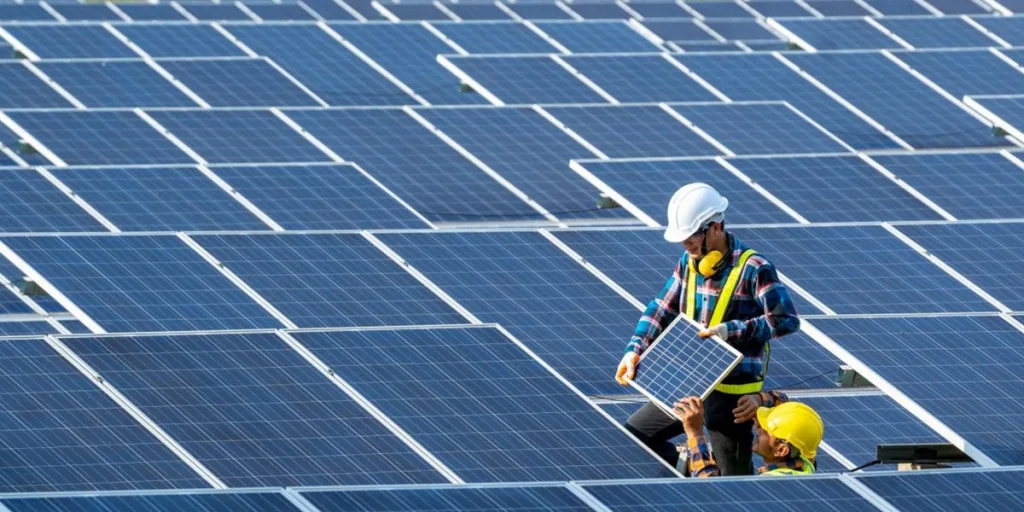In the past six months, nearly half of the EU countries (13 nations) have generated more electricity from wind and solar sources than from fossil fuels.
A new analysis by energy think tank Ember reveals that electricity generation from wind and solar sources has risen to 30 percent over the past six months, surpassing the 27 percent generated from fossil fuels. The remaining 43 percent of electricity came from a mix of hydropower, nuclear, and other sources. During this period, fossil fuel use decreased by 17 percent, despite a rebound in demand due to the gas price crisis. The EU's continued expansion of wind and solar power has effectively outpaced this increase in demand.
As wind and solar increase, the role of fossil fuels is diminishing,” says Ember analyst Dr. Chris Roslow. “We’re witnessing historic changes in the energy sector, and it’s happening rapidly.”
Mild weather and strong hydropower performance have also contributed to reduced fossil fuel production in the EU. However, according to Ember's analysis, the most significant factor has been the growth of wind and solar energy.
The shift began in 2023, following a record increase in wind and solar power generation capacity. Many EU member states implemented policies to accelerate the transition to these renewable energy sources and reduce their dependence on imported natural gas.
Continued streamlining of permits will be crucial for increasing solar and wind energy capacity. According to Ember, the EU also requires simpler regulations for upgrading existing wind farms and more efficient permitting procedures where possible.
Auctions will remain a critical mechanism for supporting the development of renewable energy. Governments can enhance their involvement by further expanding and optimizing these auction processes.
Which EU countries generate more energy from solar and wind than from fossil fuels?
Wind and solar energy have surpassed fossil fuels in 13 EU member states: Austria, Belgium, Denmark, Finland, France, Germany, Hungary, Lithuania, Luxembourg, Portugal, Spain, the Netherlands, and Sweden.
Together, these countries account for 70 percent of the EU's total electricity demand, while the remaining 30 percent is spread across 14 other countries. Just five years ago, only four out of the 27 EU member states generated more electricity from wind and solar than from fossil fuels.
Belgium, Germany, Hungary and the Netherlands achieved this result for the first time in the first six months of 2024.
In the first half of 2024, five countries—Belgium, France, Germany, Italy, and Spain—accounted for three-quarters of the decline in EU fossil fuel production. Germany experienced the most significant drop, with coal output falling by over a quarter.
Other countries have also reached significant renewable energy milestones in the past six months. In May, Spain generated more than half of its electricity from wind and solar for the first time. Poland achieved a third of its electricity from wind and solar in the same month, while Hungary set consecutive records for solar power generation in April, May, and June of this year.
According to Dr. Roslow, the pace of wind and solar energy deployment has surpassed many expectations. This progress has also enabled member states to reduce their exposure to fluctuating fossil fuel prices.
“Wind and solar are now the most competitive sources of new energy. European leaders have created the right conditions for their development, which has increased investor involvement by minimizing technical risks and obstacles,” said Dr. Roslow.
“Other member states, such as Poland and Greece, have not yet reached this level but are demonstrating impressive growth in wind and solar power,” said Dr. Roslow. For instance, solar generation in Poland surged by 37 percent in the first half of 2024, marking the fourth-largest absolute increase among EU member states during that period.
“As we witness large-scale growth in renewable energy, it’s crucial to develop new projects to ensure countries fully capitalize on the affordable and abundant energy provided by wind and solar,” said Dr. Roslow.
